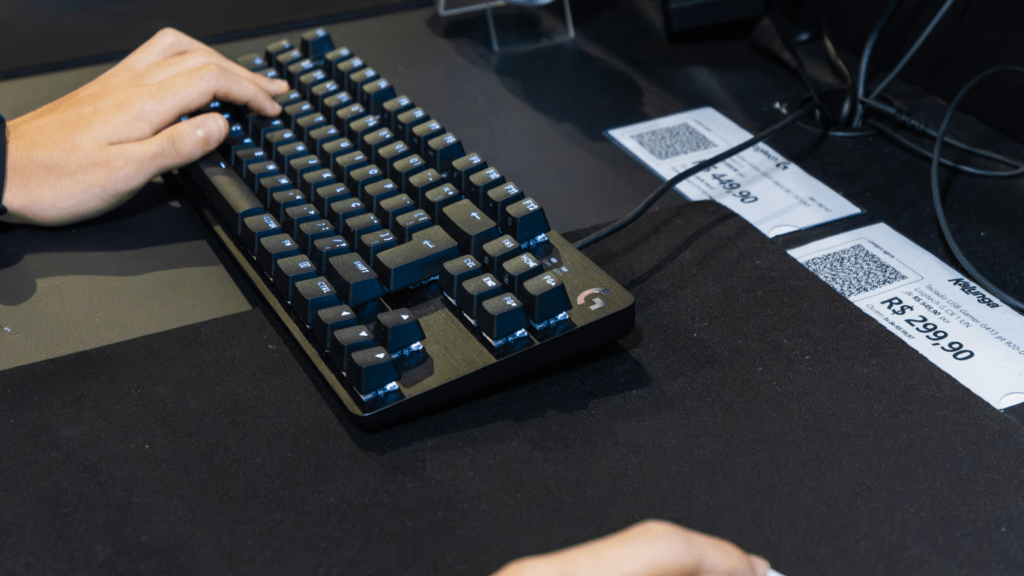In the fast-paced world of gaming, mastering movement can be the difference between victory and defeat. Whether you’re dodging bullets in a first-person shooter or positioning yourself strategically in a battle royale, the way you move can elevate your gameplay to new heights.
I’ve spent countless hours honing these skills, and I’m excited to share the insights that can help you move like a pro. Dodging, strafing, and positioning aren’t just technical skills; they’re an art form that can turn the tide of any match.
Understanding the mechanics behind these movements will not only enhance your reflexes but also improve your overall game strategy. Join me as I break down the essential techniques that will have you gliding through the chaos and outsmarting your opponents in no time.
Understanding Movement Mechanics
Movement mechanics form the backbone of effective gameplay. Mastering these concepts can significantly enhance my performance and lead to better outcomes in matches.
Importance of Movement in Gameplay
Movement plays a crucial role in gameplay. It affects my ability to avoid enemy attacks, create opportunities for counters, and secure advantageous positions. Good movement can outmaneuver opponents and dictate the flow of combat.
I’ve learned that precise movement increases survivability and opens options for engaging enemies strategically. Mastering movement isn’t just about speed; it’s about making calculated decisions.
Basic Techniques: Dodging, Strafing, and Positioning
Dodging, strafing, and positioning are fundamental techniques.
- Dodging: Dodging involves quick shifts in direction to evade attacks. Timing dodges during critical moments minimizes damage taken and confuses opponents trying to predict my movements.
- Strafing: Strafing requires moving side to side while maintaining accuracy. This technique makes me a harder target while I remain focused on firing at opponents. It’s effective in creating distance or closing in on foes.
- Positioning: Positioning emphasizes finding the best spots on the battlefield. Awareness of surroundings, high ground, and cover can provide significant advantages in engagements. I focus on positioning to control the map and take advantage of enemy weaknesses.
Focusing on these mechanics can elevate my gameplay and lead to improved results in various gaming scenarios.
Mastering Dodging Techniques
Dodging effectively can turn the tide of battle, allowing players to avoid damage while maintaining offensive capabilities. I focus on two key elements: timing and direction.
Timing Your Dodges
Timing plays a crucial role in dodging. I prioritize anticipating enemy attacks, considering factors such as enemy patterns and projectile speed. Dodging just before an attack lands maximizes the chance of success.
I practice rhythm-based dodging, which involves syncing dodges with the opponent’s movements to minimize vulnerability. This technique often catches enemies off guard and opens opportunities for counterattacks.
Directional Dodging
Directional dodging focuses on moving in specific ways to evade attacks. I emphasize moving laterally or diagonally for optimal effectiveness. Side-to-side dodges can confuse enemies, making it harder for them to predict my next move.
I also incorporate back dodges when retreating from dangerous situations. Understanding enemy positioning helps me choose the best dodge direction, enhancing my ability to avoid incoming projectiles while staying engaged in combat.
The Art of Strafing
Strafing involves side-to-side movement that enhances both offense and defense in gaming. Mastering this technique allows players to dodge incoming attacks while maintaining their aim on opponents.
What is Strafing?
Strafing refers to lateral movement in a horizontal direction, enabling players to evade enemy fire and seek targets without losing accuracy. This technique applies to various genres, from first-person shooters to multiplayer online battle arenas (MOBAs).
Players often utilize strafing to create unpredictable movement patterns, making it harder for opponents to land their shots.
Effective Strafing Patterns
Effective strafing requires practice and an understanding of movement dynamics. Here are some key patterns:
- Basic Side-to-Side: Move left and right consistently while targeting an opponent. This pattern confuses enemies and decreases their chances of hitting a player.
- Diagonal Strafing: Combine forward or backward movement with lateral shifts. This technique adds complexity to movement, making players harder to target.
- Circle Strafing: Move in a circular pattern around an enemy while focusing your aim. This method keeps opponents engaged, providing opportunities for flanking or dodging attacks.
- Retreat Strafing: As you back away from enemies, incorporate strafing to maintain distance while assessing the battlefield. This offers a strategic advantage and allows for quick repositioning.
Incorporating these strafing patterns into gameplay enhances maneuverability and creates opportunities for outmaneuvering opponents. Practicing these techniques consistently elevates players’ effectiveness in combat scenarios, improving the overall gaming experience.
Strategic Positioning
Mastering strategic positioning enhances gameplay, allowing players to control the battlefield more effectively. Choosing the right spots can lead to survival, improved engagement, and tactical advantages.
Finding the Optimal Positions
Finding optimal positions involves understanding map layouts and key areas. Look for high ground, cover, and choke points. High ground provides visibility and advantages over opponents. Positions behind cover allow for safe engagement while minimizing exposure.
Choke points create opportunities to funnel enemies, making them easier targets. I’ve found that scouting different maps and practicing in various scenarios is vital for identifying these key areas.
Using Terrain to Your Advantage
Using terrain effectively can shift the game’s dynamics. Utilize natural obstacles to block enemy lines of sight, creating opportunities to ambush or retreat. Elevated areas enhance your aim and shooting stability while keeping you safe from ground-level foes.
Furthermore, mastering the terrain enables predictive movements, allowing for quick transitions between offensive and defensive stances. Practicing terrain navigation helps develop a strong spatial awareness, crucial in fast-paced scenarios.


 Mistyck Winstonolie, the visionary founder of Power Gamer Strategy Hub, has carved a dynamic niche in the gaming world by blending passion with purpose. Under her leadership, the platform has become a vital source for gamers seeking cutting-edge news, expert strategies, esports insights, and thoughtful reviews. Driven by a deep understanding of both casual and competitive gaming cultures, Mistyck continues to empower players and fans alike through engaging content that informs, inspires, and elevates the global gaming experience.
Mistyck Winstonolie, the visionary founder of Power Gamer Strategy Hub, has carved a dynamic niche in the gaming world by blending passion with purpose. Under her leadership, the platform has become a vital source for gamers seeking cutting-edge news, expert strategies, esports insights, and thoughtful reviews. Driven by a deep understanding of both casual and competitive gaming cultures, Mistyck continues to empower players and fans alike through engaging content that informs, inspires, and elevates the global gaming experience.